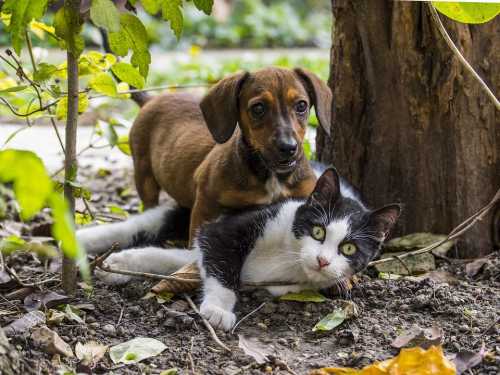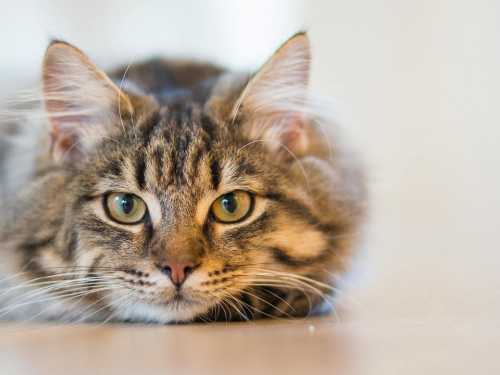
Pets, such as cats and dogs, have long become full-fledged members of the family. Their joint residence in the same house often leads to curious situations, and sometimes even unusual questions. One of them is: can a cat get pregnant by a dog?
Science gives a clear answer to this question: no, it is impossible. However, to understand the reasons, let's delve into the biological characteristics of these animals and find out why nature has established strict boundaries between these species.
Why can't a cat get pregnant by a dog?
From a biological point of view, cats and dogs are too different for their reproductive systems to interact. Even if an unsterilized cat and dog in the same house show interest in each other, this is only a consequence of instincts. No pregnancy, let alone the birth of offspring, can result from such a “relationship”.
To find out the reasons, it is necessary to consider the key aspects of their incompatibility: biological, anatomical, and genetic.
Biological incompatibility: cats and dogs are not related
Cats and dogs belong to different families: Felidae and Canidae, respectively. Although they both belong to the order Carnivora, their evolutionary paths diverged. The domestic cat is closer to its wild relatives — lions, tigers, leopards — than to canids. Dogs, on the other hand, are descended from ancient wolves. Their genetic material is so different that even hypothetical fertilization is impossible.
In nature, hybridization—the process of interbreeding between different species—occurs only under certain conditions. For example, a mule born from a donkey and a mare has a common ancestor and a similar set of chromosomes. But a cat and a dog are so far apart at the genetic level that such hybrids are out of the question.
Genetic incompatibility: too different sets of chromosomes
Every living thing has a unique set of chromosomes that determine hereditary traits. Cats have 38 (19 pairs), while dogs have 78 (39 pairs). This difference makes it impossible for genetic material to be compatible.
Even if fertilization hypothetically occurred, the embryo would not be able to develop due to the mismatch of the parents' DNA. Such an embryo would simply die in the early stages, with no chance of survival. Genetic incompatibility is one of the main reasons why hybridization between a cat and a dog is impossible.
Anatomical incompatibility: physiological obstacles
In addition to genetic differences, there are more obvious reasons why it is impossible to have offspring. A cat and a dog are anatomically incompatible:
Body size: The average cat is significantly smaller in weight and height than even small dog breeds. Attempts at physical mating between animals of such different sizes can be dangerous to the health and even life of the cat.
Reproductive system structure: The reproductive organs of cats and dogs are arranged very differently. For example, the shape and orientation of the genitals in these animals are so different that full mating is physically impossible.
Pregnancy and childbirth: Even if fertilization somehow occurs, the cat's uterus is not designed to carry puppies, any more than a dog's uterus is designed to carry kittens. Such anatomical barriers provide reliable protection against the birth of non-viable offspring.
Myths about hybrids: why do people believe in the impossible?
You can find stories and photos online that purport to prove the existence of cat-dog hybrids. In reality, such images are either fakes or examples of rare mutations within the same species.
The popularity of such myths is due to people's desire to believe in the unusual. However, science knows for sure: a cat and a dog cannot produce offspring, as this contradicts the laws of biology. If you encounter such “sensations”, be skeptical – most likely, this is another fake.
What happens if a dog mates with a cat?
Although a cat and a dog cannot produce offspring, their attempts to “get to know each other better” can lead to injuries and stress:
Physical injuries: Due to the difference in size and anatomy, such attempts can be dangerous for the cat. The small weight and fragility of the cat's body increase the risk of injury.
Behavioral stress: A dog's “courtship,” especially during puberty, can be frightening to a cat. Stress negatively affects the pet's overall health.
Aggression: If animals do not get along, their communication can end in a fight, which is dangerous and can cause injuries to both parties.
Responsible pet owners should consider these risks. Spaying and neutering is not only a way to prevent unwanted offspring, but also an opportunity to protect pets from potential conflicts.
Conclusion: myths and reality
The answer to the question of whether a cat can get pregnant from a dog is unequivocal: no, neither biologically, genetically, nor anatomically it is impossible. These two species are too far apart for their “unions” to lead to the appearance of offspring. The spread of such myths is often associated with ignorance of scientific facts.





